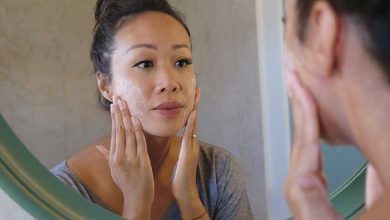The Science Behind FUE: Understanding the Procedure

Hair loss is a prevalent concern for many individuals, impacting their confidence and self-esteem. Fortunately, advancements in hair restoration techniques have provided effective solutions to address this issue. Among these techniques, Follicular Unit Extraction (FUE) has emerged as a popular and innovative approach to restoring hair. In this article, we will delve into the science behind FUE hair transplant, exploring the procedure’s intricacies and how it achieves remarkable results in hair restoration.
What is FUE?
Follicular Unit Extraction (FUE) is a minimally invasive hair restoration technique that involves the extraction of individual hair follicles from a donor area, typically located at the back or sides of the scalp. These follicles are then transplanted into areas experiencing hair loss or thinning, creating a fuller and more natural-looking hairline. FUE differs from traditional hair transplant methods, such as Follicular Unit Transplantation (FUT), in that it does not require the removal of a strip of scalp. Instead, FUE involves the extraction of follicular units one by one, resulting in minimal scarring and faster recovery times.
The Science Behind FUE
Follicular Units
The foundation of FUE lies in the concept of follicular units, which are naturally occurring groupings of hair follicles in the scalp. Each follicular unit typically contains one to four hair follicles, along with associated structures such as sebaceous glands, nerves, and blood vessels. These units are essential for maintaining the integrity and function of the hair follicles and play a crucial role in the success of FUE transplantation.
Donor Area Selection
The first step in the FUE procedure is the selection of the donor area, where healthy and genetically resistant hair follicles are harvested for transplantation. The donor area is typically located at the back or sides of the scalp, where hair follicles are less susceptible to the effects of Dihydrotestosterone (DHT), the hormone responsible for hair loss in individuals with androgenetic alopecia.
Extraction of Follicular Units
Once the donor area is selected, the extraction of follicular units begins. Using specialized tools such as micro-punches, the surgeon carefully removes individual follicular units from the donor area. This process requires precision to ensure minimal damage to the surrounding tissue and maximum graft survival. The size and depth of the extraction tool are carefully calibrated to match the size of the follicular units, allowing for smooth and efficient extraction.
Recipient Site Preparation
With the follicular units harvested, the next step is the preparation of the recipient site for transplantation. Tiny incisions are made in the balding or thinning areas of the scalp, following the natural hairline and orientation. The angle, depth, and distribution of these incisions are crucial to achieving a seamless and natural-looking result. Advanced imaging techniques may be used to create a detailed map of the recipient area, guiding the surgeon in the placement of follicular units.
Graft Insertion
Once the recipient sites are prepared, the harvested follicular units are delicately inserted into the designated areas. Careful attention is paid to the placement and density of the grafts to ensure a balanced and aesthetically pleasing outcome. The surgeon may use techniques such as dense packing to achieve maximum coverage and density in the transplant area.
Postoperative Care
Following the procedure, patients receive instructions for postoperative care to promote healing and ensure optimal results. This may include guidelines for washing the scalp, avoiding strenuous activities, and taking prescribed medications to minimize discomfort and prevent infection. Patients are typically able to resume their normal activities within a few days of the procedure, with full results becoming apparent in the months following transplantation.
The Science Behind Success: Key Factors
Graft Survival
The success of FUE transplantation depends on the survival of transplanted grafts in the recipient area. Several factors influence graft survival, including the quality of the harvested follicular units, the skill and experience of the surgeon, and the postoperative care provided to the patient. By carefully selecting and handling follicular units, surgeons can optimize graft survival rates and achieve natural-looking results.
Hair Growth Cycle
Understanding the hair growth cycle is crucial for achieving optimal results in FUE transplantation. Hair follicles go through three stages of growth: anagen (growth), catagen (transition), and telogen (resting). Transplanted hair follicles initially enter a resting phase before regrowing hair, leading to temporary shedding in the weeks following transplantation. By timing the procedure to coincide with the anagen phase of the hair growth cycle, surgeons can maximize the growth and density of transplanted hair.
Patient Selection
Not all individuals are suitable candidates for FUE hair transplant. Factors such as the extent of hair loss, the quality of the donor area, and the patient’s expectations must be carefully considered before proceeding with surgery. Patients with advanced hair loss may require multiple transplant sessions to achieve desired results, while those with limited donor availability may need alternative treatment options.
Conclusion
FUE hair transplantation is a sophisticated procedure that harnesses the principles of follicular units and precise surgical techniques to restore hair and enhance appearance. By understanding the science behind FUE, patients can gain insight into the intricacies of the procedure and make informed decisions about their hair restoration journey. With advancements in technology and surgical techniques, FUE continues to evolve and improve, offering hope to individuals experiencing hair loss. If you’re considering FUE transplantation as a solution to your hair loss, consult with a qualified hair restoration specialist to learn more about the procedure and develop a personalized treatment plan. With the science behind FUE on your side, you can unlock the potential for a fuller, more vibrant head of hair and regain confidence in your appearance.








